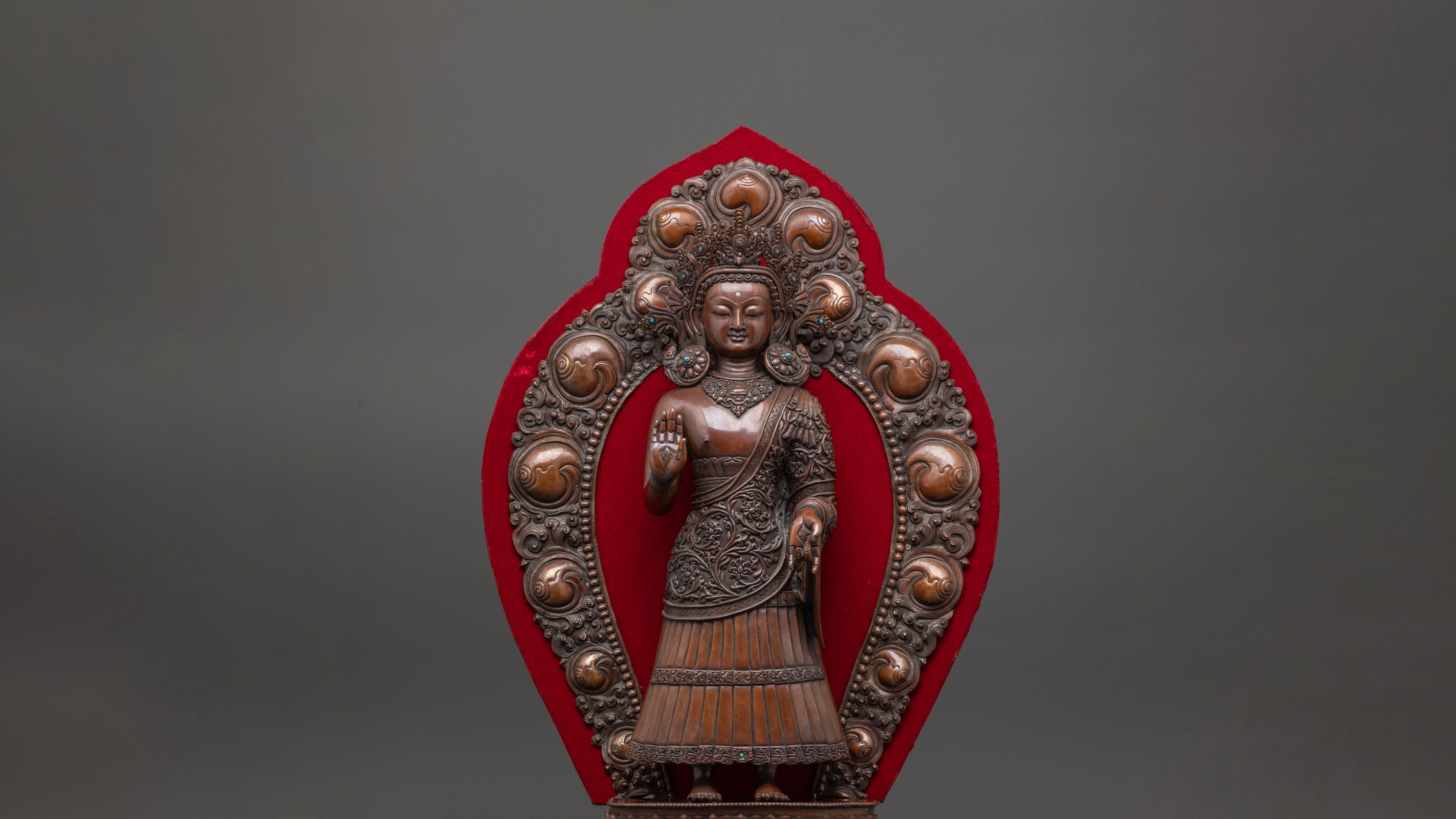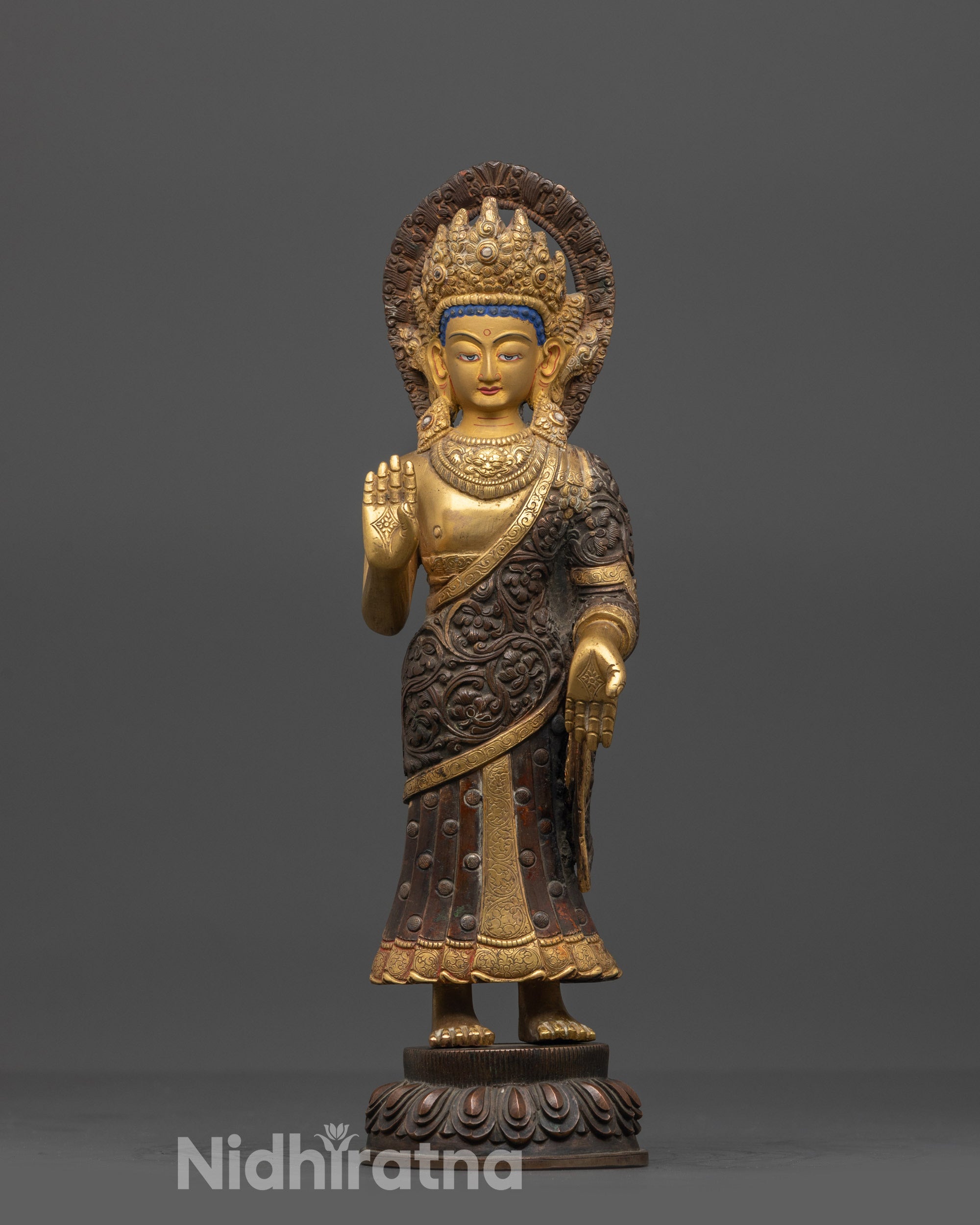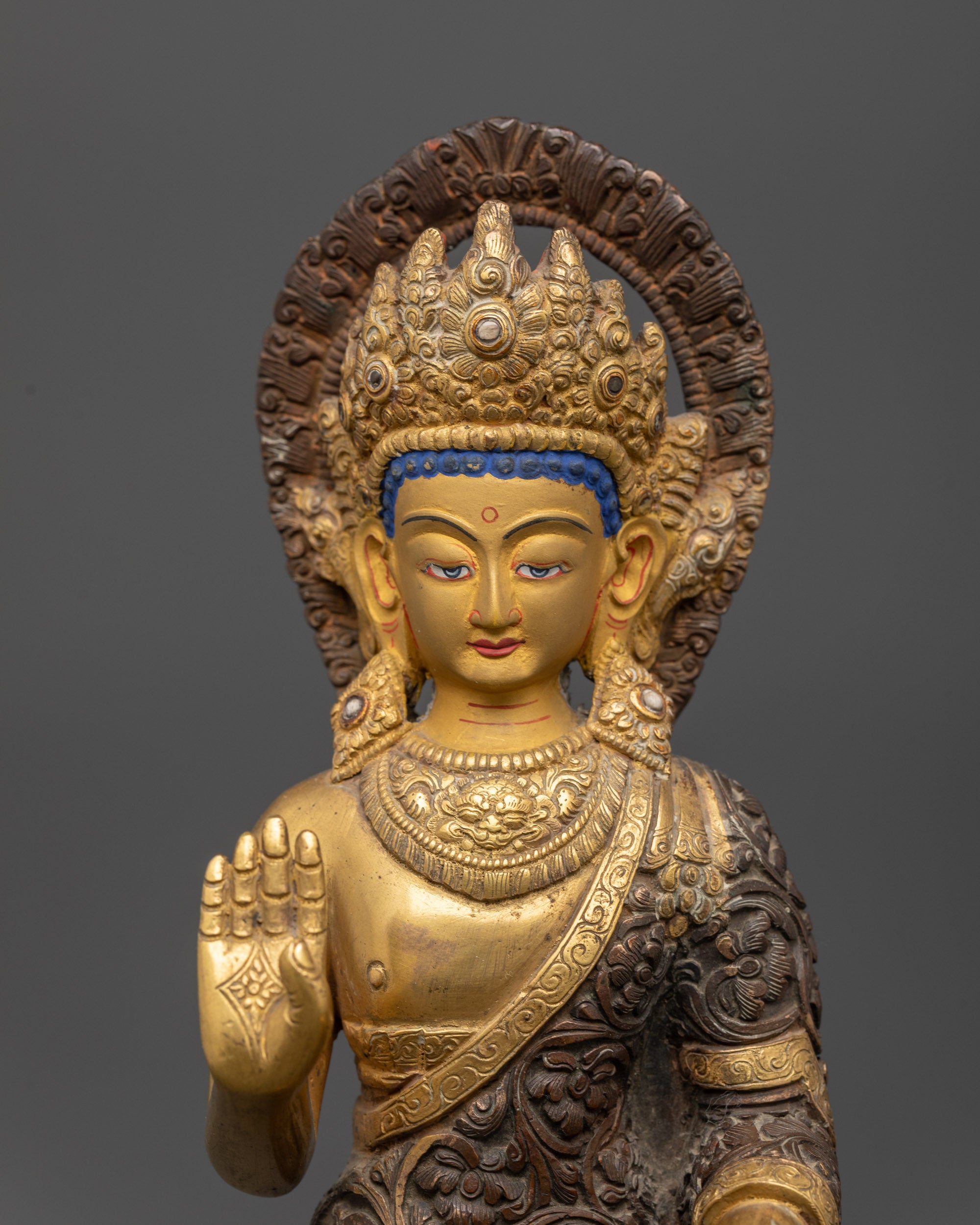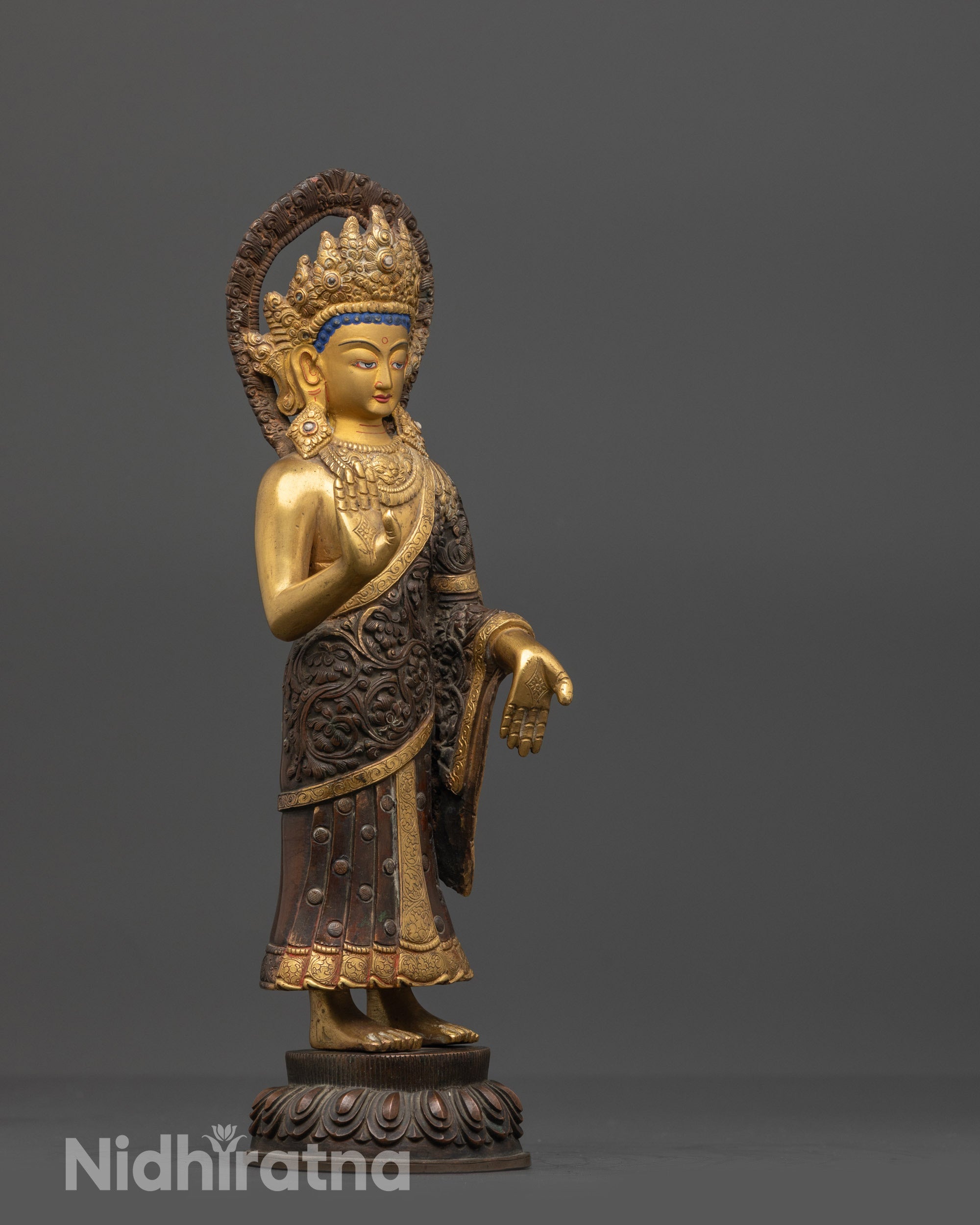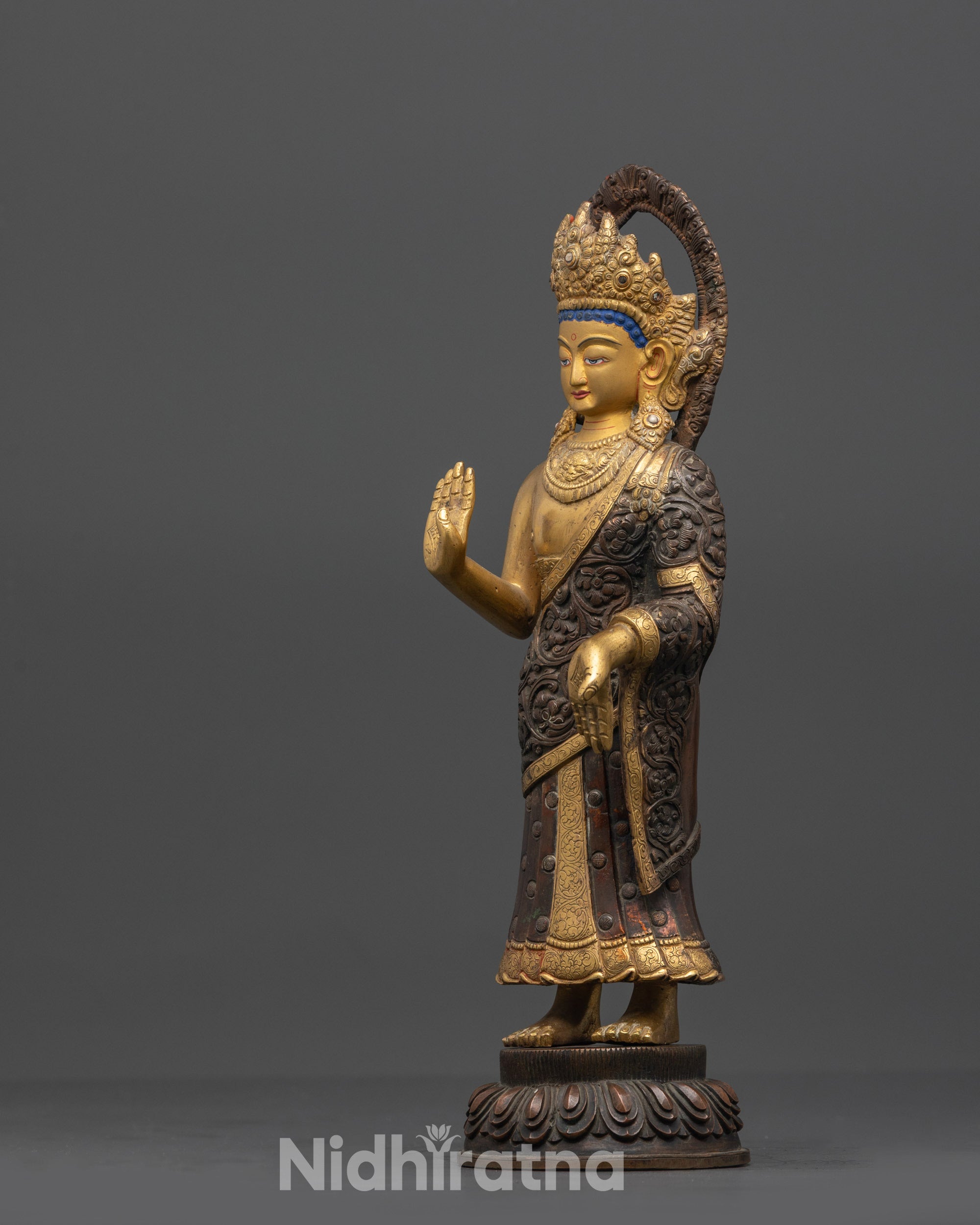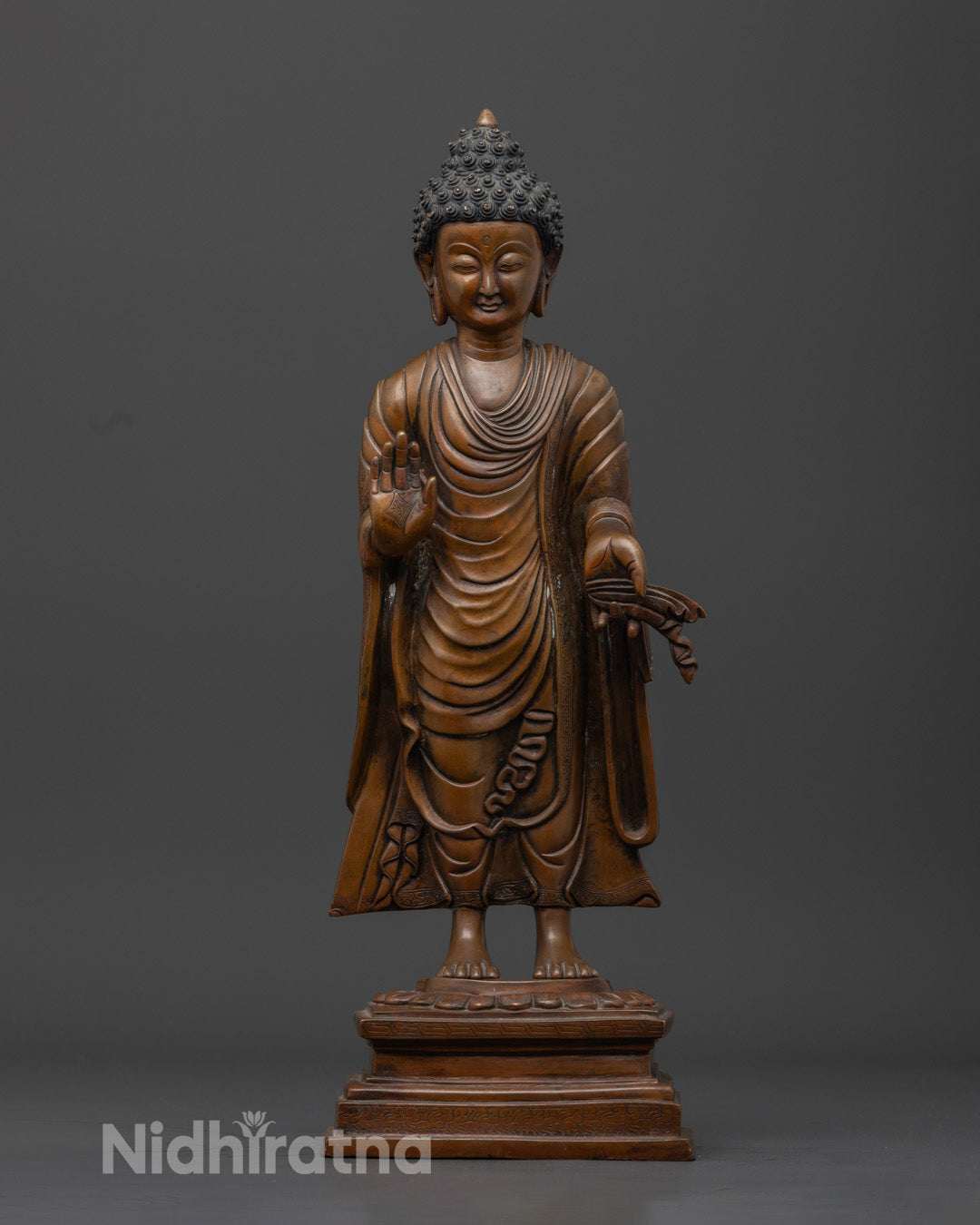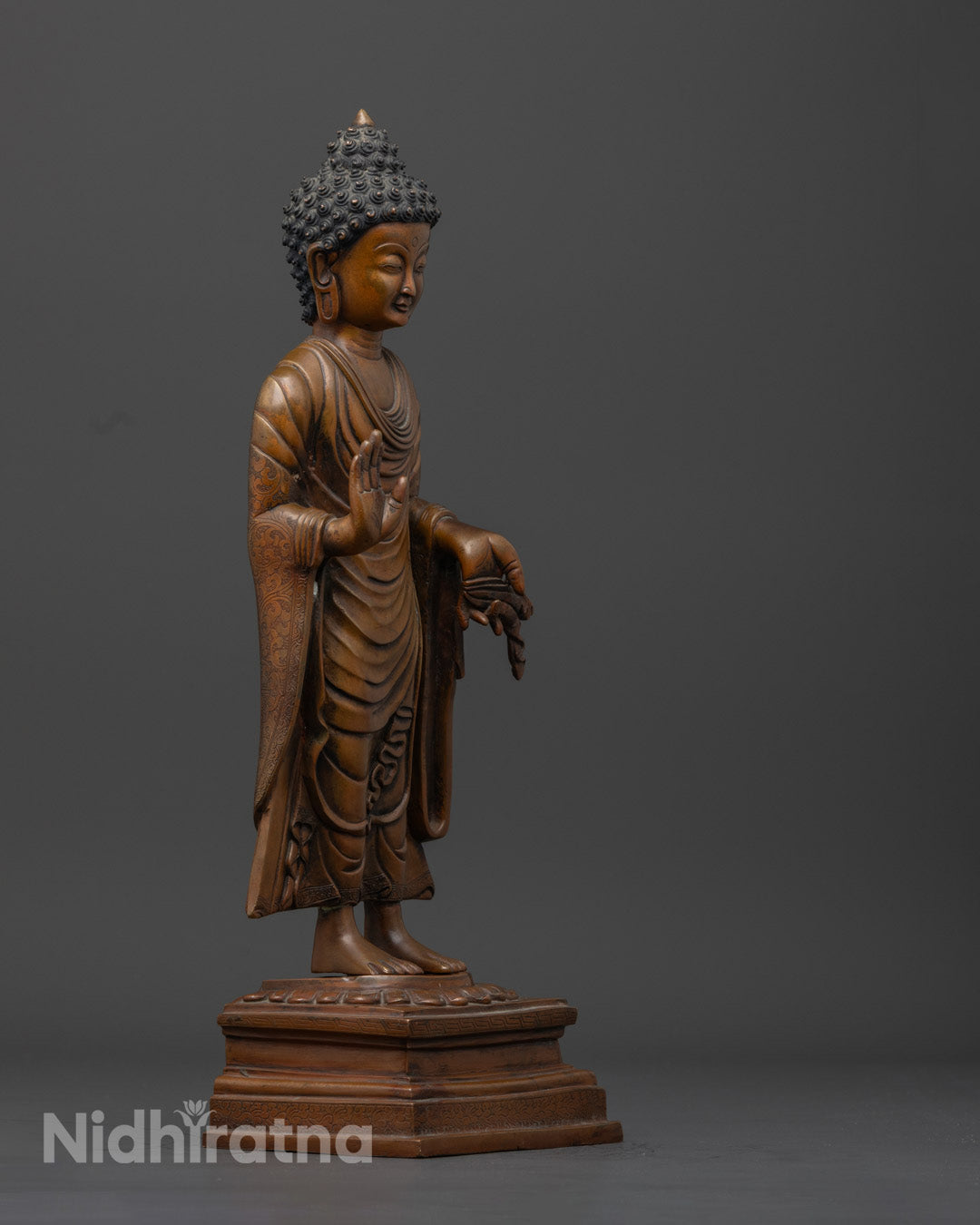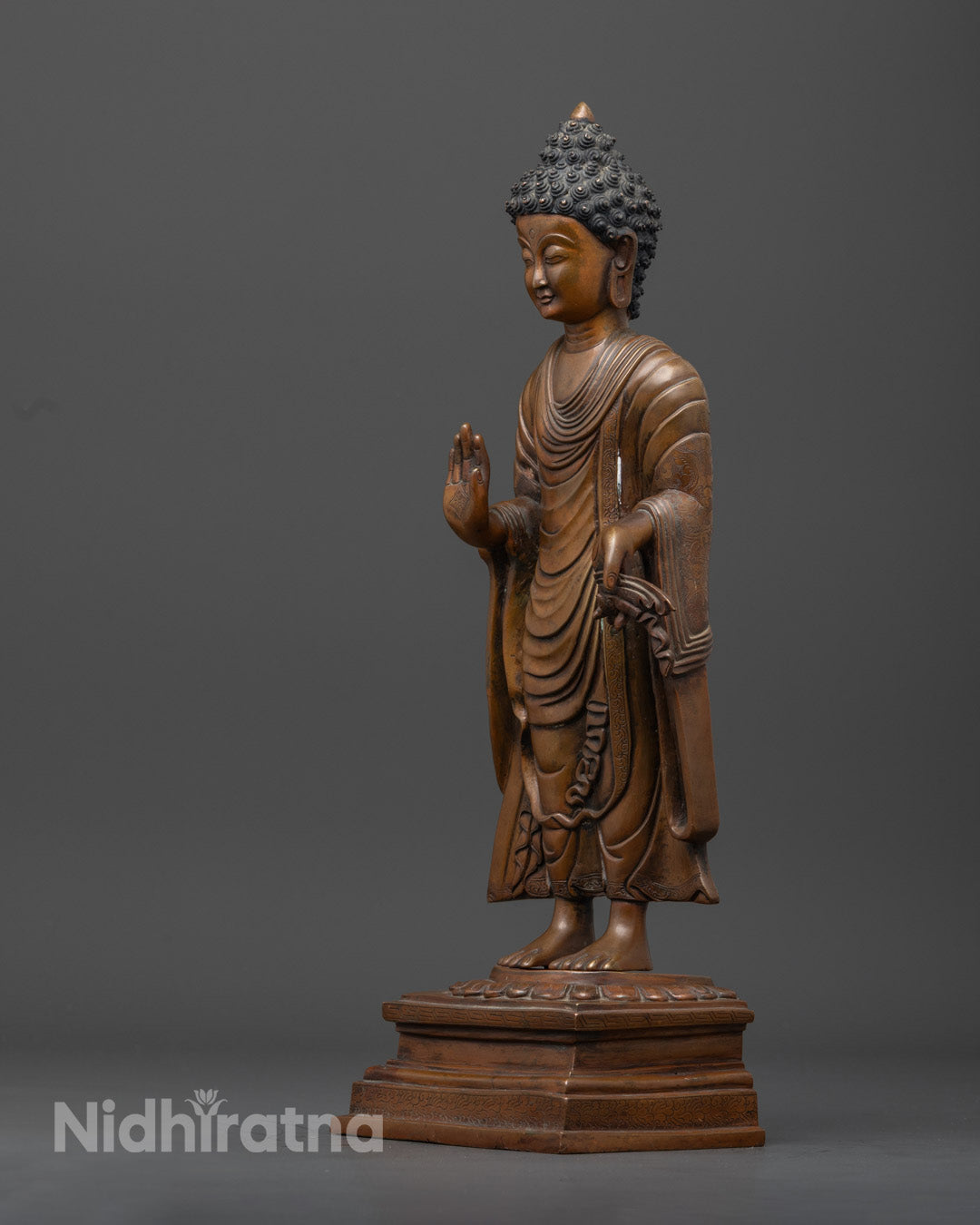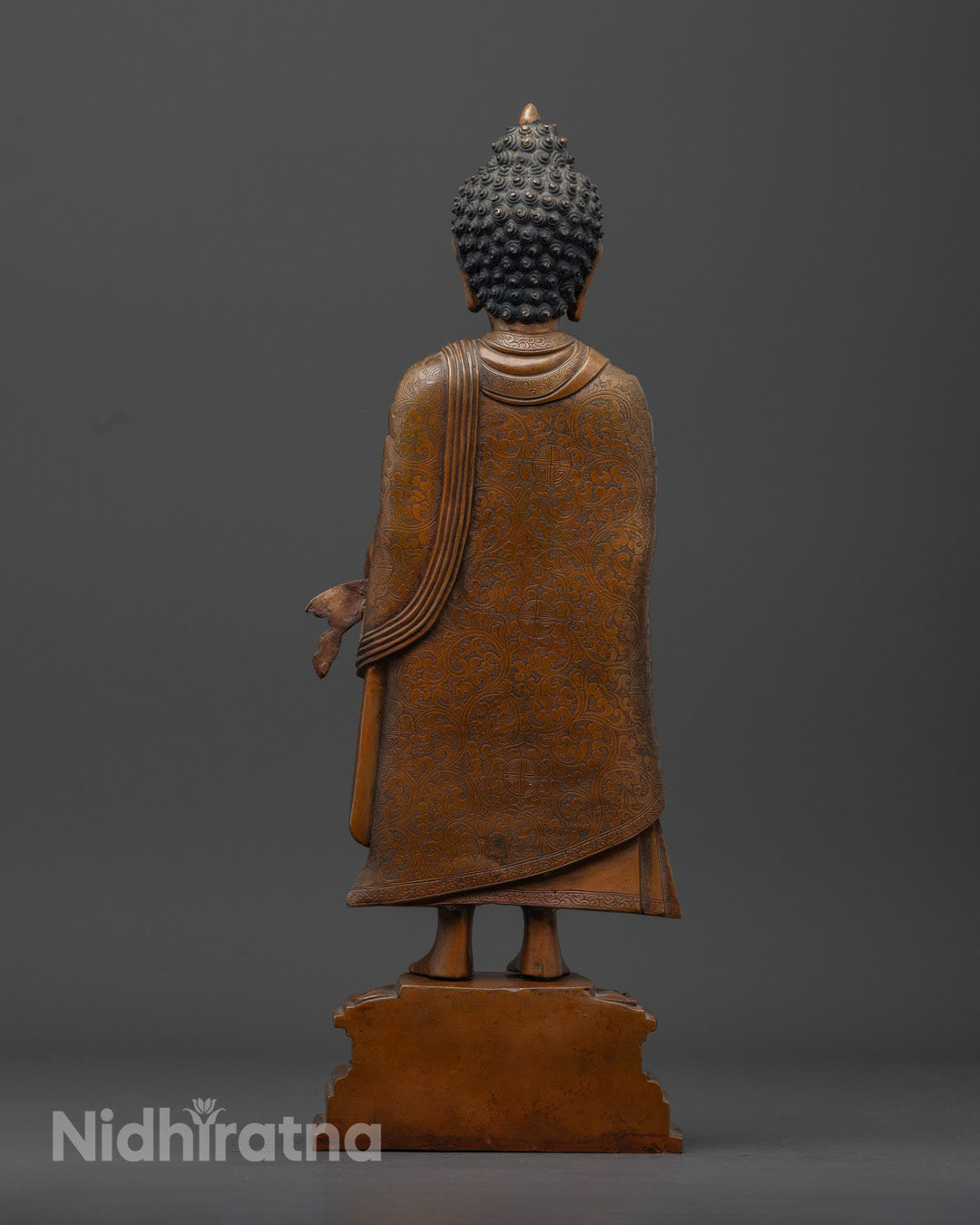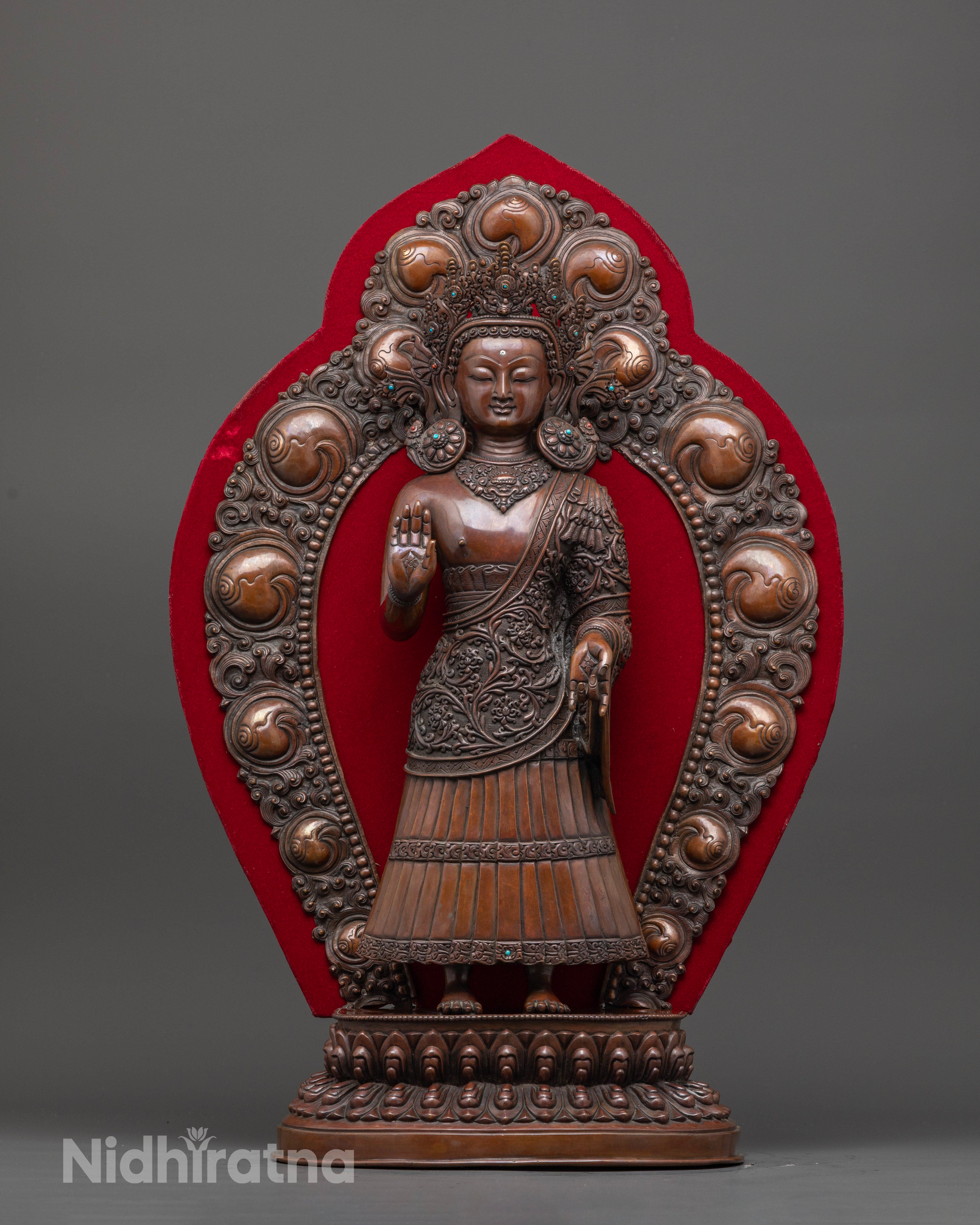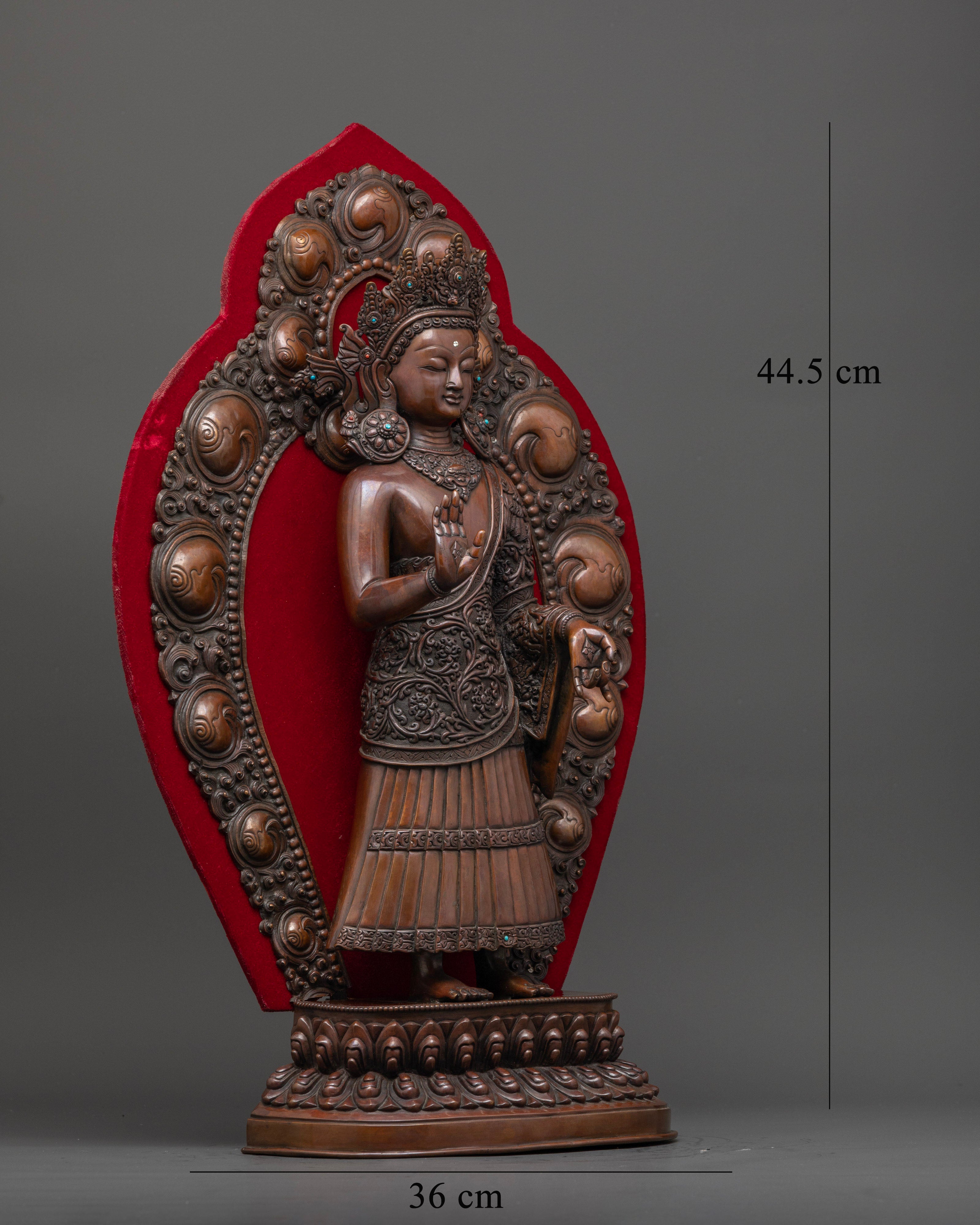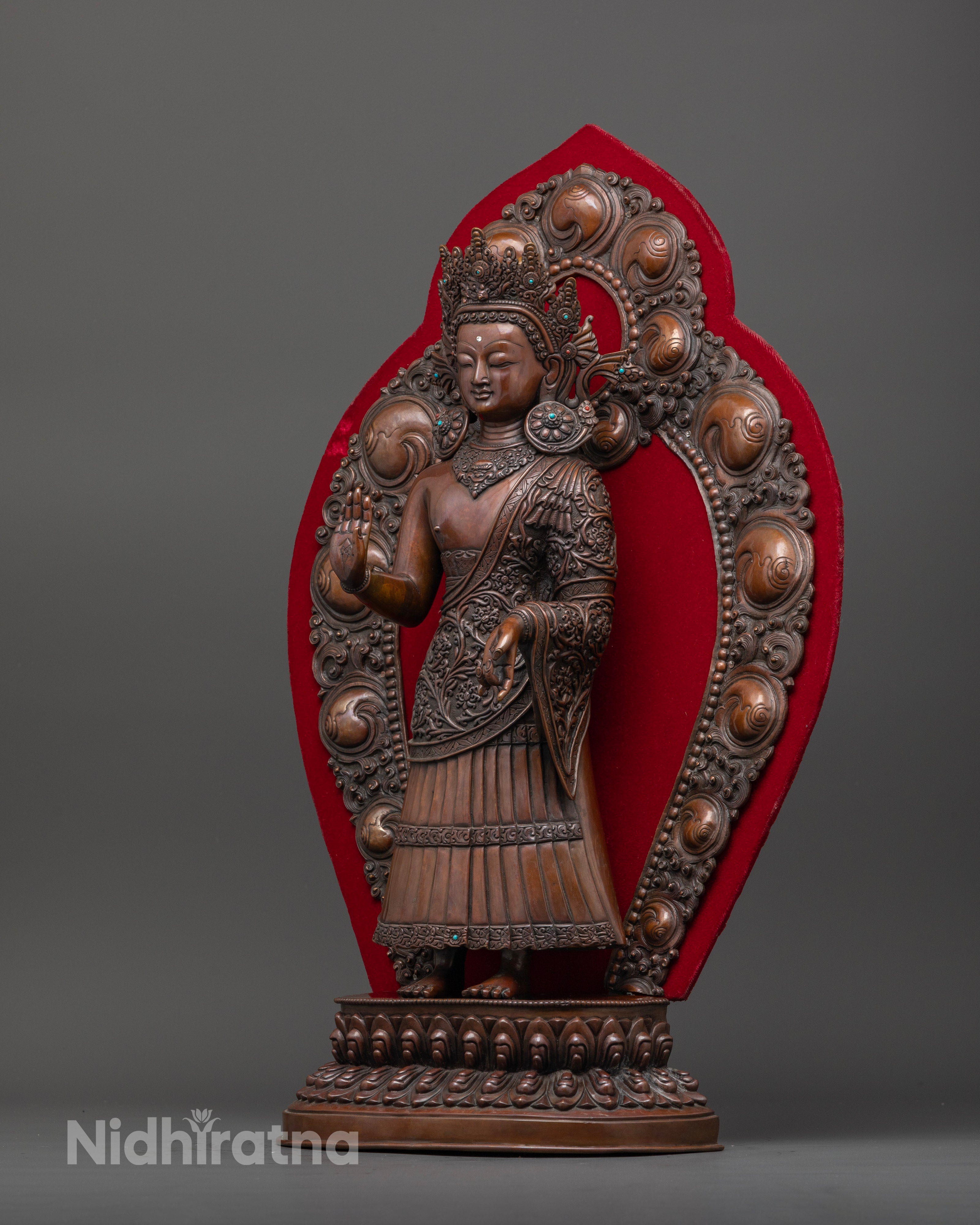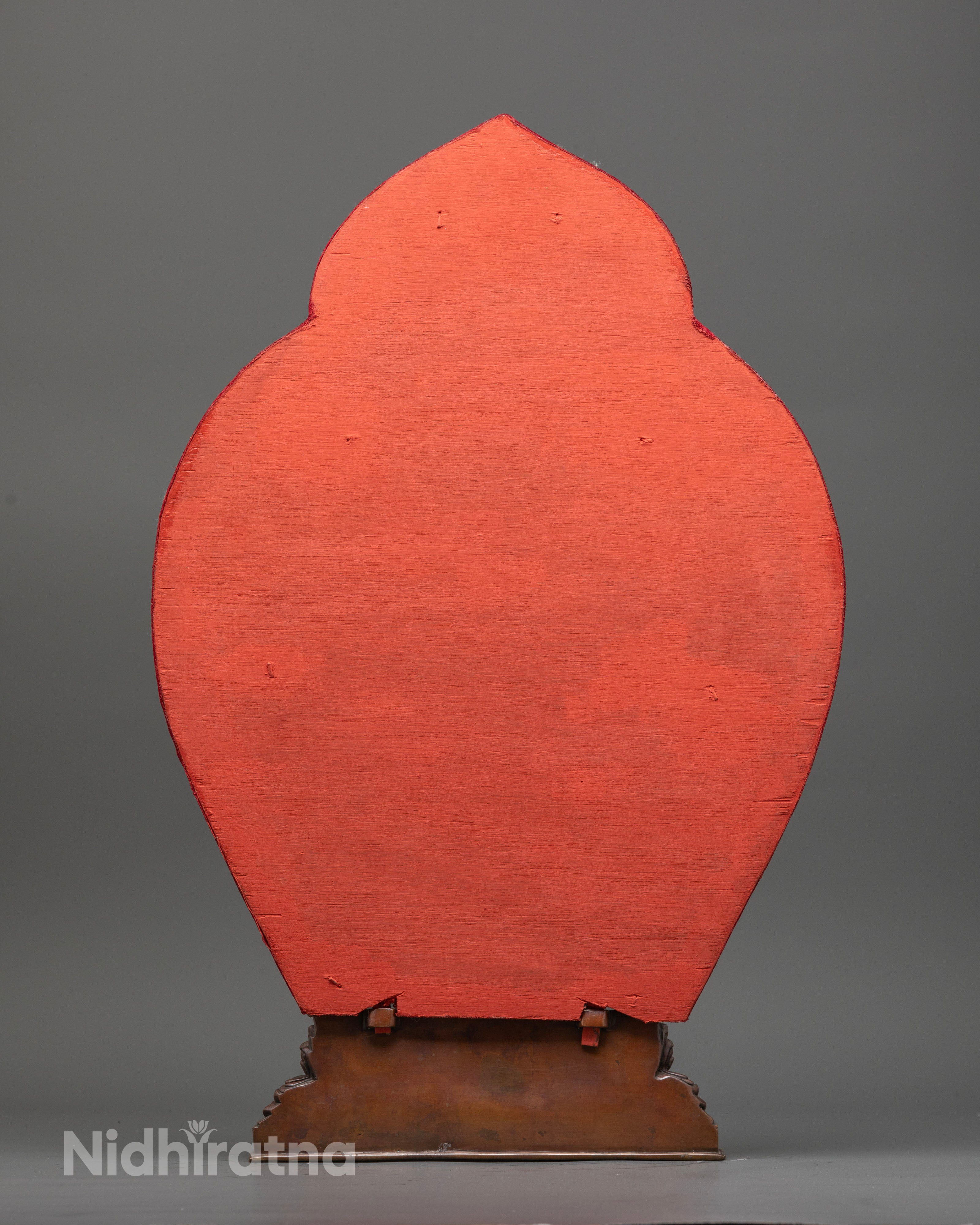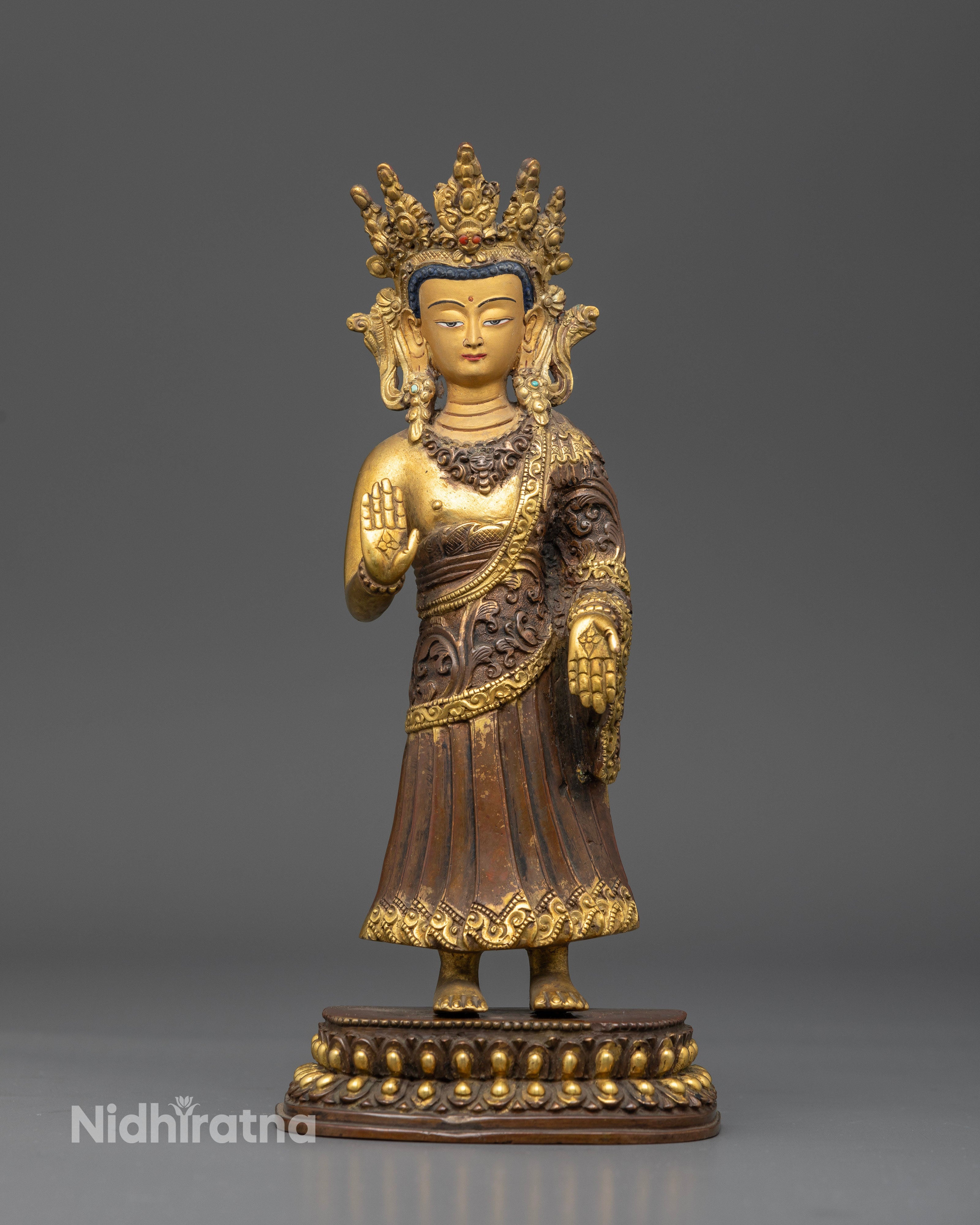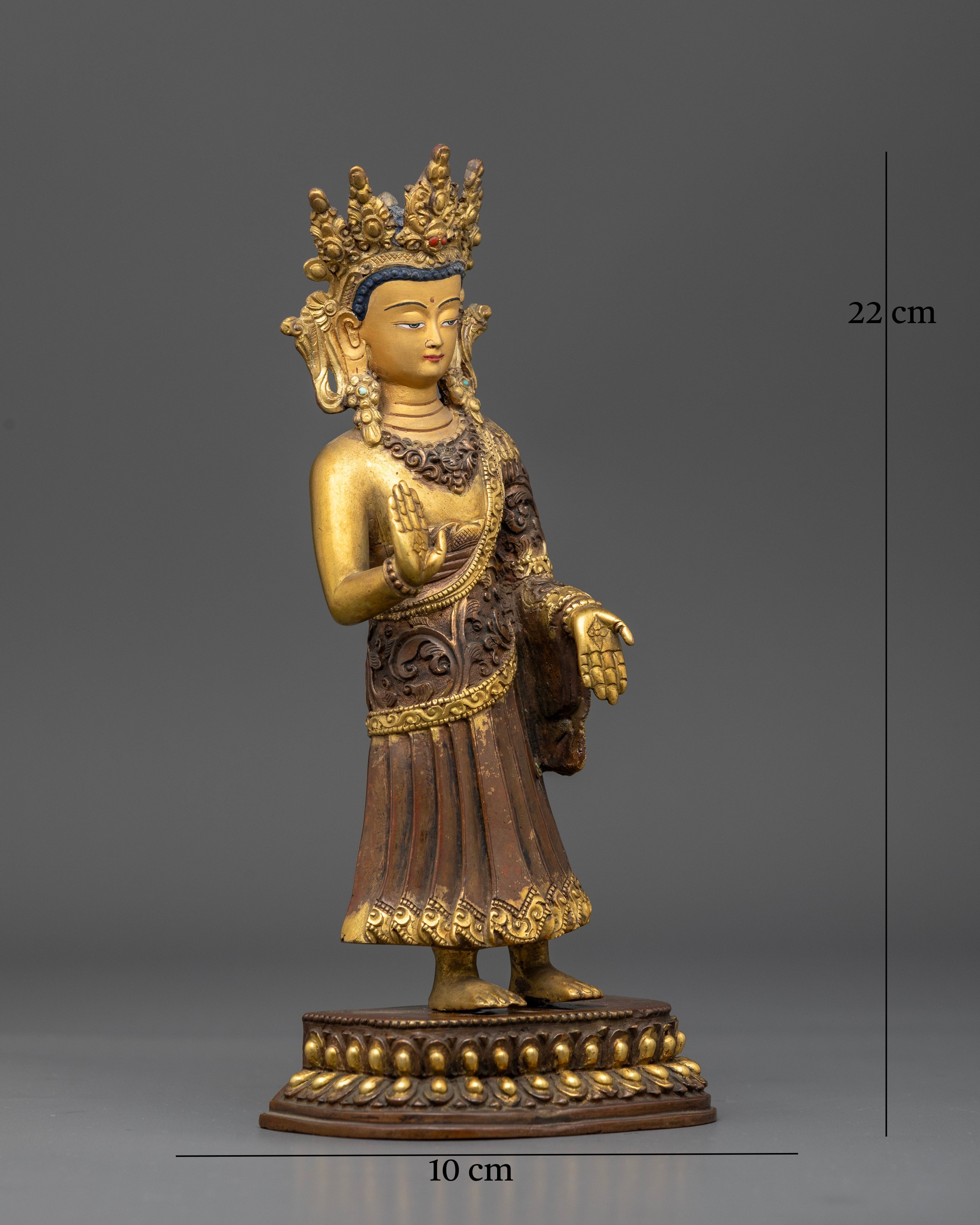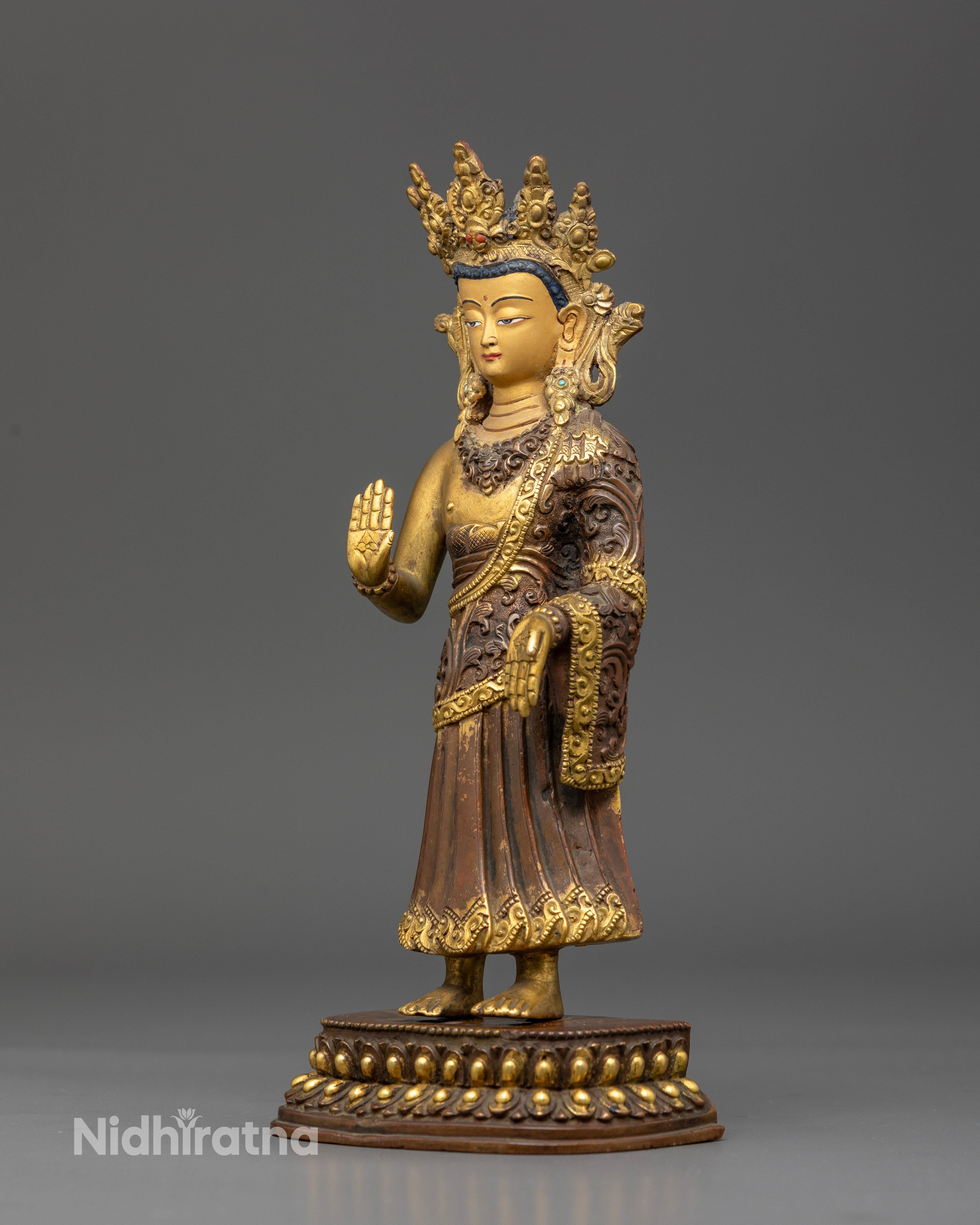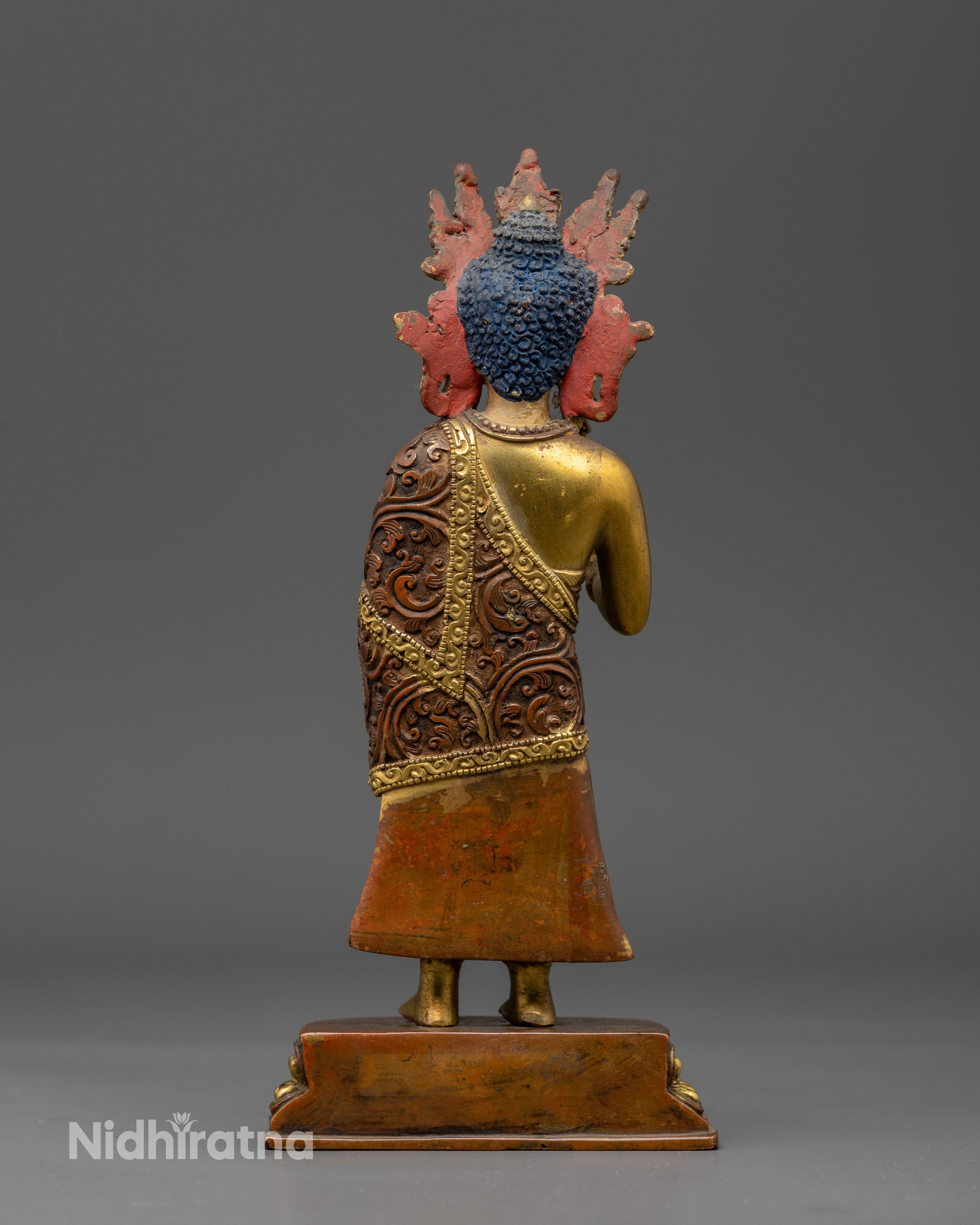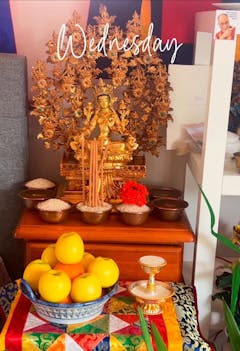Dipankara Buddha Statue | Handmade Spiritual Decor from Nepal
Dipankara Buddha: The Enlightened Past Buddha Statue
Oxidized Dipankar Buddha Statue: Timeless Antique Design
Enlightened Dipankara Statue: The Light-Bringer of Dharma
Dipankara Buddha Statue: The Illuminator of the Past and Beacon of Wisdom
The Dipankara Buddha statue, crafted by the master artisans of Nepal, represents a profound symbol of light, wisdom, and timeless teachings. As one of the historical Buddhas who illuminated the world long before the historical Buddha Shakyamuni, Dipankara embodies the wisdom that transcends time, offering hope and guidance to all beings. This exquisite statue, with its refined details, is more than just an artistic achievement—it's a spiritual artifact that carries with it centuries of tradition, dedication, and devotion.
Crafted on a copper base and meticulously gold-gilded, each statue is a unique work of art. Every detail, from the serene expression on the Buddha’s face to the intricate patterns on his robes, is carved with care and attention. The artisans of Nepal pour their years of experience and spiritual wisdom into creating a statue that reflects not only the beauty of craftsmanship but also the deep spiritual significance of the Buddha himself. Every stroke of the chisel and every layer of gilding carries with it the teachings of the Buddha, passed down through generations of artisans who have been guided by the principles of compassion, wisdom, and devotion.
The Dipankara Buddha statue is designed to inspire devotion and reverence in the hearts of all who behold it. As a symbol of light, wisdom, and the potential for enlightenment, it serves as a guiding beacon for practitioners and admirers alike. Whether placed in a meditation space or a place of worship, this statue serves as a reminder of the eternal teachings of the Buddha and the path toward enlightenment. The artistry, combined with the rich symbolism of the statue, creates a profound presence that encourages spiritual growth and the cultivation of wisdom, compassion, and inner peace.
The Illuminating Dipankara Buddha
Dipankara, also known as the "Buddha of Light," is one of the twenty-four Buddhas of the past, who is revered for his ability to illuminate the path toward enlightenment. His name, Dipankara, is derived from the Sanskrit words "dipa," meaning light, and "kara," meaning maker or bearer—thus he is known as the “Light Bearer” or “Illuminator.” Depicted with a serene and compassionate expression, Dipankara Buddha symbolizes the light of wisdom that dispels the darkness of ignorance and suffering.
In the statue, Dipankara is shown seated in the lotus position (Padmasana), which signifies the perfect balance of mind and body, and his posture conveys deep meditation, focusing on inner peace and enlightenment. His hands, in a typical gesture of teaching, form the Dharmachakra Mudra, symbolizing the turning of the Wheel of Dharma. This mudra represents the spreading of the Buddha’s teachings, which guide sentient beings toward liberation from suffering. The gentle yet powerful form of the statue captures the essence of his teachings, which emphasize the path of wisdom and the cultivation of virtues like compassion, mindfulness, and concentration.
The golden radiance surrounding the statue represents the wisdom that Dipankara Buddha brings to the world. The Buddha’s light shines not just in the physical world, but also in the hearts of practitioners, offering them guidance and inspiration. This light is not a mere external phenomenon but a deep inner illumination that can transform the lives of those who seek it. The light symbolizes the wisdom that dispels the darkness of ignorance, leading beings toward enlightenment.
Dipankara Buddha is often portrayed with a radiant halo around his head, signifying his enlightened state. This halo is not just a visual element but represents the wisdom and compassion that emanate from him, filling the universe with light and warmth. His serene, compassionate expression invites all who view the statue to approach him with reverence and devotion, seeking the wisdom that can help them overcome the suffering inherent in the cycle of samsara.
Symbolism and Attributes of the Dipankara Buddha Statue
Dipankara Buddha’s image is rich with symbolic meaning. His robes, often depicted in vibrant colors and flowing with graceful folds, represent the perfection of his spiritual teachings. The robes symbolize his renunciation of worldly attachments and the purity of his wisdom. The Buddha’s exposed chest, with the hands placed in a mudra of teaching, conveys the openness of his heart and the willingness to share his profound wisdom with all beings. His face, serene and composed, reflects the inner calm and peace achieved through enlightenment.
The statue is often accompanied by symbolic objects and elements that enhance its spiritual significance. For instance, a lotus flower is frequently depicted beneath the Buddha, symbolizing purity and enlightenment. The lotus grows in muddy waters, yet remains untouched by the dirt, representing how a wise being can live in the world without being tainted by its impurities. The Buddha’s seated position on the lotus signifies his complete mastery over the mind and his ability to rise above the suffering of samsara.
In addition, the Buddha’s hands hold various symbolic implements, each representing different aspects of his teachings. The Dharma Wheel (Dharmachakra) in his hands, often carved with intricate details, represents the Buddha’s teachings and the path to liberation. The wheel symbolizes the eternal cycle of birth, death, and rebirth, and the Buddha’s ability to guide beings beyond this cycle toward Nirvana. The crystal rosary (mala) often seen in his hands represents the focus and discipline necessary to attain spiritual wisdom.
Dipankara Buddha and the Teachings of the Past
As a historical figure, Dipankara Buddha is said to have lived in a distant era long before the time of Shakyamuni Buddha. He is often regarded as the forerunner to Shakyamuni, who later appeared in the world to continue the cycle of teaching and enlightenment. According to Buddhist scriptures, Dipankara’s teachings laid the groundwork for the future Buddhas and their followers, offering a glimpse into the nature of suffering and the path to liberation.
In one of the most famous stories associated with Dipankara Buddha, the future Buddha Shakyamuni (then known as Prince Siddhartha) is said to have encountered Dipankara while he was still a prince. After hearing Dipankara’s teachings and realizing his own potential for enlightenment, Siddhartha made a vow to follow the path of the Buddha, eventually becoming Shakyamuni Buddha. This story highlights the interconnection between the past, present, and future Buddhas, with each one guiding beings on the path to enlightenment.
Dipankara’s teachings, like those of all Buddhas, emphasize the impermanence of life and the necessity of wisdom to overcome suffering. His teachings encourage practitioners to cultivate virtues such as patience, kindness, and mindfulness, which are essential for attaining the ultimate goal of Nirvana.
The Mantra of Dipankara Buddha
The mantra of Dipankara Buddha, though less widely known than that of other Buddhas, carries profound significance for those who seek enlightenment and wisdom. The mantra is often recited by practitioners to invoke the qualities of Dipankara, particularly the wisdom and light he embodies. The mantra serves as a powerful tool for purifying the mind and generating positive karmic effects.
The mantra associated with Dipankara Buddha is:
"Om Dipankaraye Svaha"
This mantra translates to “Om, Homage to Dipankara, the Illuminator.” The word "Dipankara" in the mantra refers to the Buddha's role as the bearer of light, guiding all beings out of darkness and ignorance.
Conclusion
The Dipankara Buddha statue is not only a masterpiece of craftsmanship but also a profound spiritual reminder of the path to enlightenment. Its intricate details, serene expression, and radiant light serve as a constant reminder of the wisdom, compassion, and clarity that Dipankara Buddha brought into the world. For practitioners and devotees, the statue is more than just an artistic object; it is a source of inspiration, a guide on the spiritual path, and a beacon of hope for all who seek the light of wisdom.

